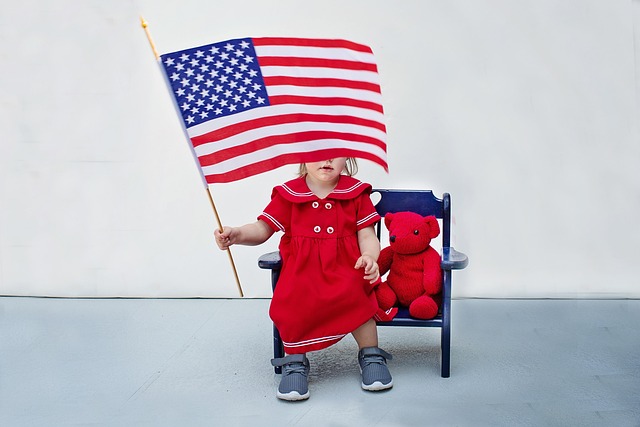The 2.5 x 4 American Ultimate Flags is more than a symbol of pride; it's an intricate tapestry weaving together history, culture, and universal symbolism. Specific colors like red (bravery), white (purity), and blue (vigilance) convey profound meanings, reflecting the nation's core values. Stars, too, hold global appeal as symbols of unity, freedom, and aspirations, with roots in ancient civilizations' navigation and storytelling. Decoding these color and constellation associations offers a unique path to self-discovery and appreciation for diverse cultural interpretations, as seen vividly in the American Ultimate Flags.
“Unravel the hidden language of colors and stars, as we explore their profound symbolism across cultures and history. This article delves into the powerful meanings behind iconic symbols, with a special focus on the 2.5 x 4 American Flag. From national identities to universal interpretations, we’ll examine how colors and stars convey messages of freedom, unity, and hope. Discover personal connections to these celestial signs and learn to decode the rich tapestry of cultural significance they hold.”
- Understanding the Power of Color Symbolism in Flags
- The 2.5 x 4 American Flag: Unveiling Its Hidden Meanings
- Stars as Symbols: Their Universal Interpretations
- Cultural and Historical Perspectives on Color and Star Significance
- Decoding Personal Associations with Colors and Constellations
Understanding the Power of Color Symbolism in Flags

The power of color symbolism in flags is a fascinating aspect of cultural and historical storytelling. Flags, often seen as powerful symbols, use specific colors to convey distinct meanings and represent various causes or nations. For instance, the iconic 2.5 x 4 American flag features bold red, white, and blue stripes, each carrying its own significance. Red symbolizes bravery and courage, white stands for purity and innocence, while blue represents vigilance, perseverance, and justice—a testament to the values that shape a nation.
Understanding color symbolism allows us to interpret flags as intricate tapestries of history and culture. The careful arrangement of colors enables effective communication of ideas and sentiments on a global scale. Whether it’s the vibrant red of revolution or the serene blue of peace, each hue carries weight and meaning, making flags powerful tools for expression and unity.
The 2.5 x 4 American Flag: Unveiling Its Hidden Meanings

The iconic 2.5 x 4 American Flag, often a symbol of pride and patriotism, holds deeper meanings beyond its visual impact. Each stripe and star encapsulates specific values and concepts that have shaped the nation’s identity. The 13 horizontal stripes represent the original 13 colonies that declared independence, symbolizing unity and the struggle for freedom. Conversely, the 50 white stars on a blue field represent the 50 states of the Union, emphasizing national unity and the diverse tapestry of communities within the country.
This flag’s design serves as a powerful visual narrative, reflecting the history, diversity, and ideals of the United States. The arrangement of stars, in particular, follows specific patterns and meanings. For instance, the 50 stars are arranged in rows and columns creating a unique design that showcases the interconnectedness of all states. This layout not only ensures aesthetic appeal but also conveys a sense of collective identity and shared aspirations among its citizens.
Stars as Symbols: Their Universal Interpretations

Stars, often seen as celestial bodies, have long held symbolic meanings across various cultures and societies. In many traditional interpretations, stars represent guidance, hope, and infinite possibilities. Their universal appeal lies in their ability to inspire awe and wonder, connecting humans to the vastness of the universe.
In the context of flags, like the iconic 2.5 x 4 American flag, stars serve as powerful symbols. The stars on this flag don’t merely represent celestial entities but also carry historical and cultural significance. Each star embodies unity, freedom, and the aspirations of a nation. This symbolism transcends borders, making stars universal emblems that resonate with people worldwide.
Cultural and Historical Perspectives on Color and Star Significance

The significance of color and stars has evolved over centuries, shaped by diverse cultural and historical contexts. Around the world, different societies have attributed unique meanings to various hues, often intertwined with their beliefs, traditions, and historic events. For instance, red has long symbolized passion, strength, and courage in many cultures, while blue is frequently associated with serenity, wisdom, and faith. In the United States, the 2.5 x 4 American flag is a powerful emblem, where red represents valor and endurance, white symbolizes purity and innocence, and blue stands for vigilance, perseverance, and justice.
Historically, stars have also carried profound meanings across civilizations. Ancient cultures like the Egyptians and Chinese used constellations to guide navigation and tell stories about the cosmos. In astrology, each zodiac sign is associated with specific star constellations, influencing personality traits and life predictions. Even in modern times, stars remain symbols of hope, guidance, and aspiration. The twinkling lights in the night sky have inspired countless poets, artists, and dreamers throughout history, reminding us of our place in the vast universe.
Decoding Personal Associations with Colors and Constellations

Decoding Personal Associations with Colors and Constellations
Colors hold profound symbolism across cultures, often evoking specific emotions and memories. When it comes to understanding their meanings, personal associations play a pivotal role. Each individual carries unique experiences tied to certain hues, making color interpretation highly subjective. For instance, the vibrant red might evoke feelings of passion for one person but courage or love for another, based on their life’s narrative. Similarly, constellations, with their ancient names and legends, have been associated with specific traits and fates throughout history. The Big Dipper, a prominent constellation in the northern hemisphere, is linked to various cultural beliefs, offering insights into one’s identity and destiny.
Exploring these personal connections can be a powerful tool for self-discovery. Consider the 2.5 x 4 American flag, where red, white, and blue evoke patriotism and freedom. For someone with a rich history in a particular region, these colors might stir nostalgic memories and deep emotions tied to their heritage. By understanding how colors and constellations resonate individually, one can unlock hidden meanings and gain a deeper appreciation for the intricate tapestry of symbolism that surrounds us.
